
It’s ideal for startups, embedded systems, or anyone who needs search that just works—fast, efficient, and tuned for integration.
- App Developers: Add lightweight but smart search functionality to apps, websites, or chatbots.
- Startup Teams: Use fast, semantic retrieval to power MVPs or customer-facing assistants.
- Support & Helpdesk Builders: Let AI fetch help docs and FAQs in milliseconds.
- Docs & Knowledge Base Creators: Build smarter search across internal documents or wikis.
- Embedded Device Engineers: Integrate natural search into smart devices, kiosks, or wearables.
- Educational Tool Creators: Deliver instant retrieval for tutoring, quizzes, or student queries.
🛠️ How to Use GPT-4o-mini Search Preview?
- Step 1: Use the OpenAI API (Preview Access Required): GPT-4o-mini Search is currently in preview—ensure access via your OpenAI developer account.
- Step 2: Craft a Query: Submit a user question or prompt that would typically require factual lookup.
- Step 3: Model Retrieves Relevant Context: The GPT-4o-mini model finds and surfaces relevant data based on semantic meaning—not just keywords.
- Step 4: Use It in Your App or Flow: Display search results in real-time, feed into a chatbot, or use the output to guide actions.
- Step 5: Scale as Needed: Its lightweight footprint makes it suitable for mobile, edge, or low-cost deployments.
- Low-Latency, High-Speed: Built for performance in real-time or constrained environments.
- Semantic Retrieval: Understands context and meaning—not just exact matches.
- Cost-Efficient: Runs on the lightweight GPT-4o-mini, so it’s perfect for budget-sensitive scaling.
- Multilingual Ready: Handles cross-language retrieval with semantic clarity.
- Smart API Layer: Designed to slot into apps and workflows with minimal engineering effort.
- Bridge to RAG Workflows: Pairs easily with GPT models for context-aware generation.
- Blazing Fast: Real-time responses in apps, even on mobile or edge hardware.
- Compact & Efficient: Uses fewer resources, which equals cheaper ops.
- Surprisingly Smart: Punches above its weight in semantic understanding.
- Easy to Combine with Generation: Great for RAG workflows or chatbot enhancement.
- Language-Agnostic Search: Retrieve and respond across languages.
- Limited Depth: May miss nuance in long or highly technical queries.
- No Upload Support (Yet): Still preview-only with limited custom data indexing.
- Experimental Phase: Not recommended for production use just yet.
- Fewer Advanced Features: No document ranking, vector indexing, or scoring out of the box.
- No Source Citations: Doesn’t currently offer document-level citations like the full GPT-4o search.
API only
$0.15/$0.60 for 1M tokens
Proud of the love you're getting? Show off your AI Toolbook reviews—then invite more fans to share the love and build your credibility.
Add an AI Toolbook badge to your site—an easy way to drive followers, showcase updates, and collect reviews. It's like a mini 24/7 billboard for your AI.
Reviews
Rating Distribution
Average score
Popular Mention
FAQs
Similar AI Tools
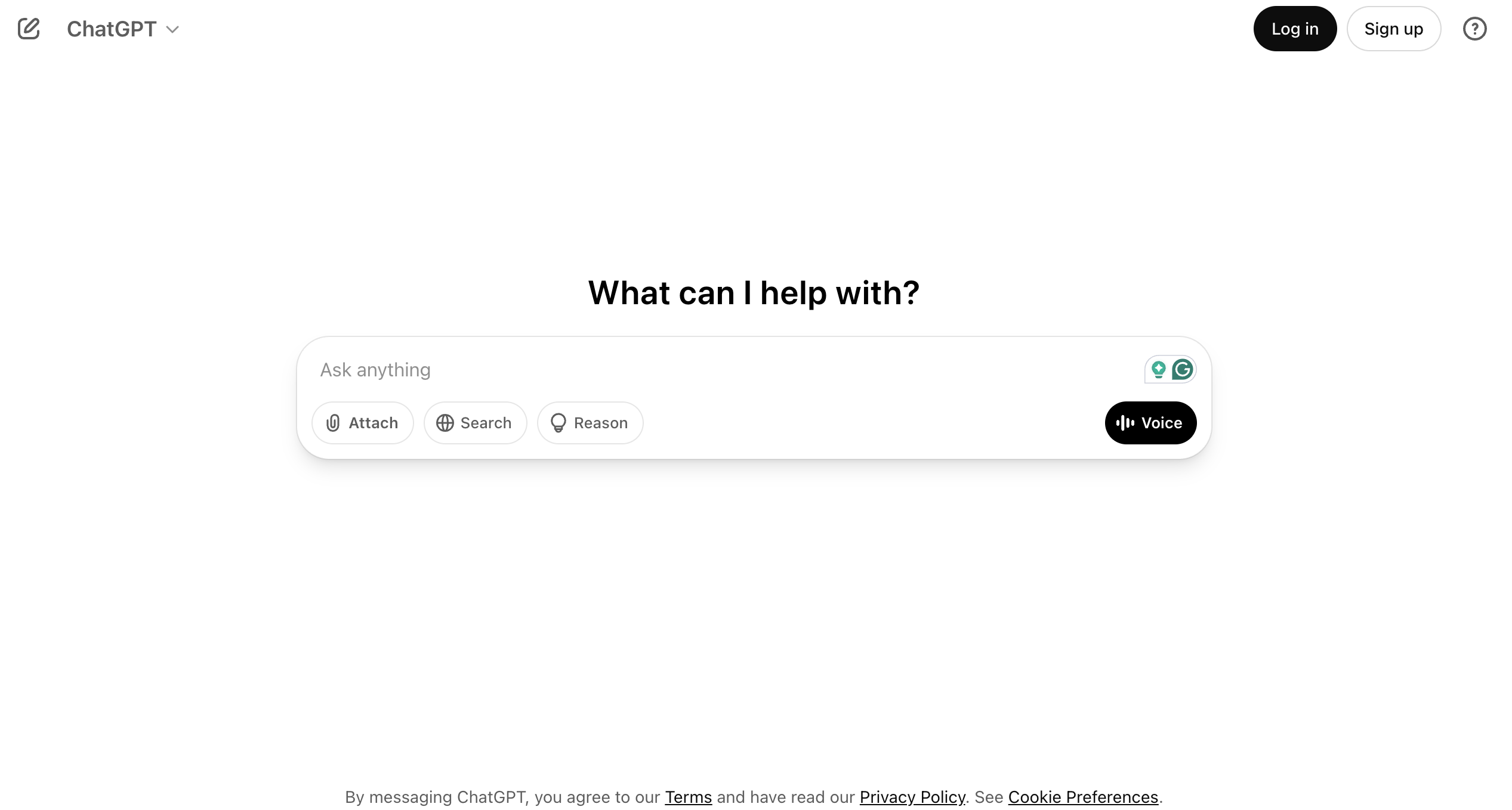

OpenAI ChatGPT
ChatGPT is an advanced AI chatbot developed by OpenAI that can generate human-like text, answer questions, assist with creative writing, and engage in natural conversations. Powered by OpenAI’s GPT models, it is widely used for customer support, content creation, tutoring, and even casual chat. ChatGPT is available as a web app, API, and mobile app, making it accessible for personal and business use.


OpenAI ChatGPT
ChatGPT is an advanced AI chatbot developed by OpenAI that can generate human-like text, answer questions, assist with creative writing, and engage in natural conversations. Powered by OpenAI’s GPT models, it is widely used for customer support, content creation, tutoring, and even casual chat. ChatGPT is available as a web app, API, and mobile app, making it accessible for personal and business use.


OpenAI ChatGPT
ChatGPT is an advanced AI chatbot developed by OpenAI that can generate human-like text, answer questions, assist with creative writing, and engage in natural conversations. Powered by OpenAI’s GPT models, it is widely used for customer support, content creation, tutoring, and even casual chat. ChatGPT is available as a web app, API, and mobile app, making it accessible for personal and business use.

OpenAI’s Real-Time API is a game-changing advancement in AI interaction, enabling developers to build apps that respond instantly—literally in milliseconds—to user inputs. It drastically reduces the response latency of OpenAI’s GPT-4o model to as low as 100 milliseconds, unlocking a whole new world of AI-powered experiences that feel more human, responsive, and conversational in real time. Whether you're building a live voice assistant, a responsive chatbot, or interactive multiplayer tools powered by AI, this API puts real in real-time AI.


OpenAI Realtime AP..
OpenAI’s Real-Time API is a game-changing advancement in AI interaction, enabling developers to build apps that respond instantly—literally in milliseconds—to user inputs. It drastically reduces the response latency of OpenAI’s GPT-4o model to as low as 100 milliseconds, unlocking a whole new world of AI-powered experiences that feel more human, responsive, and conversational in real time. Whether you're building a live voice assistant, a responsive chatbot, or interactive multiplayer tools powered by AI, this API puts real in real-time AI.


OpenAI Realtime AP..
OpenAI’s Real-Time API is a game-changing advancement in AI interaction, enabling developers to build apps that respond instantly—literally in milliseconds—to user inputs. It drastically reduces the response latency of OpenAI’s GPT-4o model to as low as 100 milliseconds, unlocking a whole new world of AI-powered experiences that feel more human, responsive, and conversational in real time. Whether you're building a live voice assistant, a responsive chatbot, or interactive multiplayer tools powered by AI, this API puts real in real-time AI.


OpenAI GPT Image 1
GPT-Image-1 is OpenAI's state-of-the-art vision model designed to understand and interpret images with human-like perception. It enables developers and businesses to analyze, summarize, and extract detailed insights from images using natural language. Whether you're building AI agents, accessibility tools, or image-driven workflows, GPT-Image-1 brings powerful multimodal capabilities into your applications with impressive accuracy. Optimized for use via API, it can handle diverse image types—charts, screenshots, photographs, documents, and more—making it one of the most versatile models in OpenAI’s portfolio.


OpenAI GPT Image 1
GPT-Image-1 is OpenAI's state-of-the-art vision model designed to understand and interpret images with human-like perception. It enables developers and businesses to analyze, summarize, and extract detailed insights from images using natural language. Whether you're building AI agents, accessibility tools, or image-driven workflows, GPT-Image-1 brings powerful multimodal capabilities into your applications with impressive accuracy. Optimized for use via API, it can handle diverse image types—charts, screenshots, photographs, documents, and more—making it one of the most versatile models in OpenAI’s portfolio.


OpenAI GPT Image 1
GPT-Image-1 is OpenAI's state-of-the-art vision model designed to understand and interpret images with human-like perception. It enables developers and businesses to analyze, summarize, and extract detailed insights from images using natural language. Whether you're building AI agents, accessibility tools, or image-driven workflows, GPT-Image-1 brings powerful multimodal capabilities into your applications with impressive accuracy. Optimized for use via API, it can handle diverse image types—charts, screenshots, photographs, documents, and more—making it one of the most versatile models in OpenAI’s portfolio.
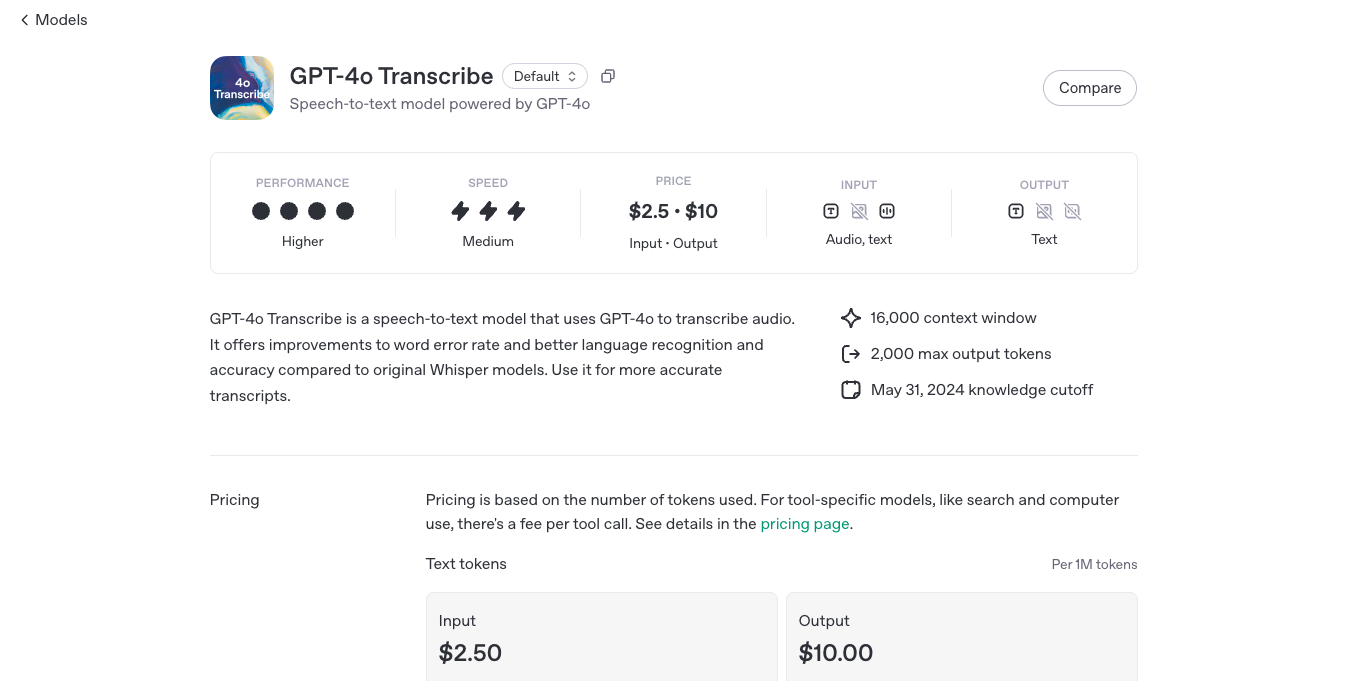

OpenAI GPT 4o Tran..
GPT-4o Transcribe is OpenAI’s high-performance speech-to-text model built into the GPT-4o family. It converts spoken audio into accurate, readable, and structured text—quickly and with surprising clarity. Whether you're transcribing interviews, meetings, podcasts, or real-time conversations, GPT-4o Transcribe delivers fast, multilingual transcription powered by the same model that understands and generates across text, vision, and audio. It’s ideal for developers and teams building voice-enabled apps, transcription services, or any tool where spoken language needs to become text—instantly and intelligently.


OpenAI GPT 4o Tran..
GPT-4o Transcribe is OpenAI’s high-performance speech-to-text model built into the GPT-4o family. It converts spoken audio into accurate, readable, and structured text—quickly and with surprising clarity. Whether you're transcribing interviews, meetings, podcasts, or real-time conversations, GPT-4o Transcribe delivers fast, multilingual transcription powered by the same model that understands and generates across text, vision, and audio. It’s ideal for developers and teams building voice-enabled apps, transcription services, or any tool where spoken language needs to become text—instantly and intelligently.


OpenAI GPT 4o Tran..
GPT-4o Transcribe is OpenAI’s high-performance speech-to-text model built into the GPT-4o family. It converts spoken audio into accurate, readable, and structured text—quickly and with surprising clarity. Whether you're transcribing interviews, meetings, podcasts, or real-time conversations, GPT-4o Transcribe delivers fast, multilingual transcription powered by the same model that understands and generates across text, vision, and audio. It’s ideal for developers and teams building voice-enabled apps, transcription services, or any tool where spoken language needs to become text—instantly and intelligently.
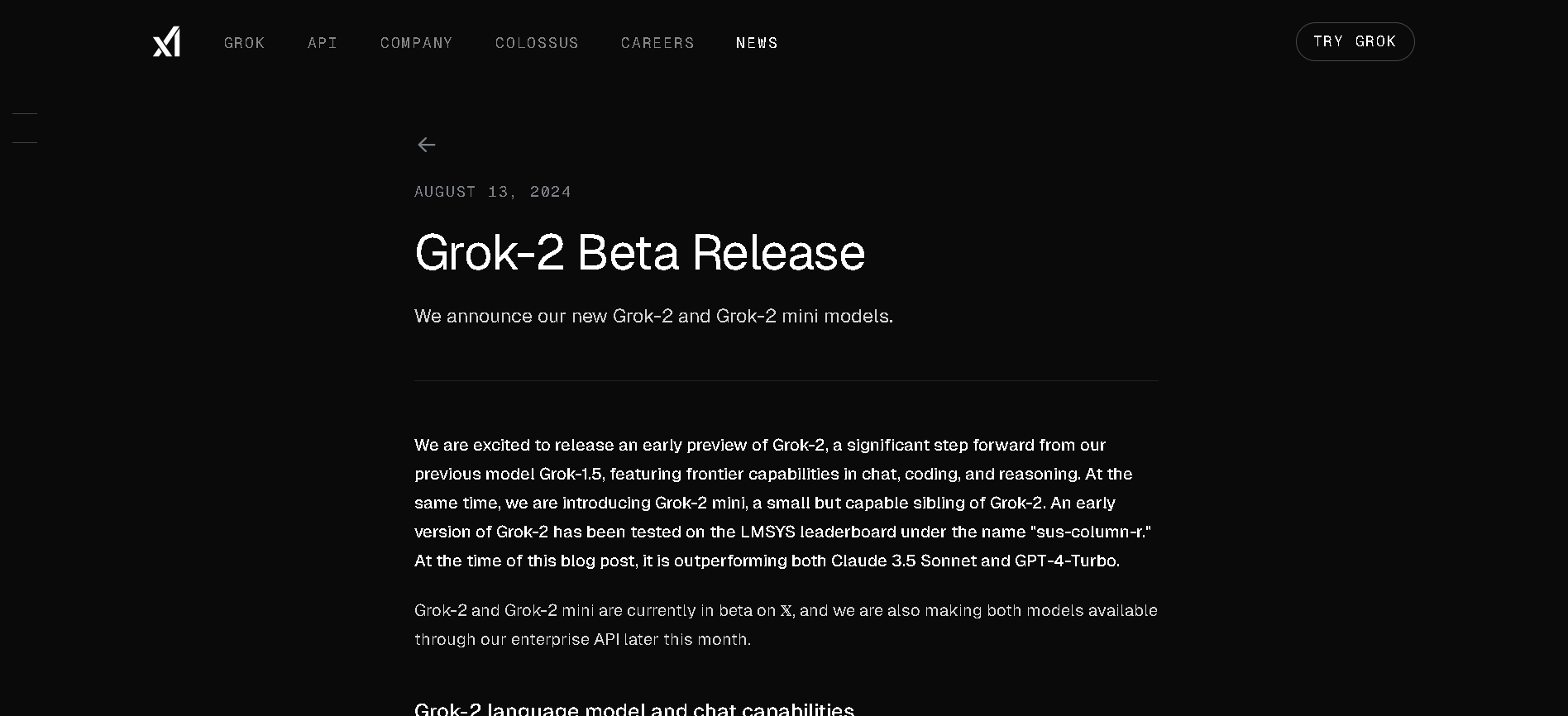

Grok 2
Grok 2 is xAI’s second-generation chatbot that extends Grok’s capabilities to include real-time web access, multimodal output (text, vision, image generation via FLUX.1), and improved reasoning performance. It’s available to X Premium and Premium+ users and through xAI’s enterprise API.


Grok 2
Grok 2 is xAI’s second-generation chatbot that extends Grok’s capabilities to include real-time web access, multimodal output (text, vision, image generation via FLUX.1), and improved reasoning performance. It’s available to X Premium and Premium+ users and through xAI’s enterprise API.


Grok 2
Grok 2 is xAI’s second-generation chatbot that extends Grok’s capabilities to include real-time web access, multimodal output (text, vision, image generation via FLUX.1), and improved reasoning performance. It’s available to X Premium and Premium+ users and through xAI’s enterprise API.
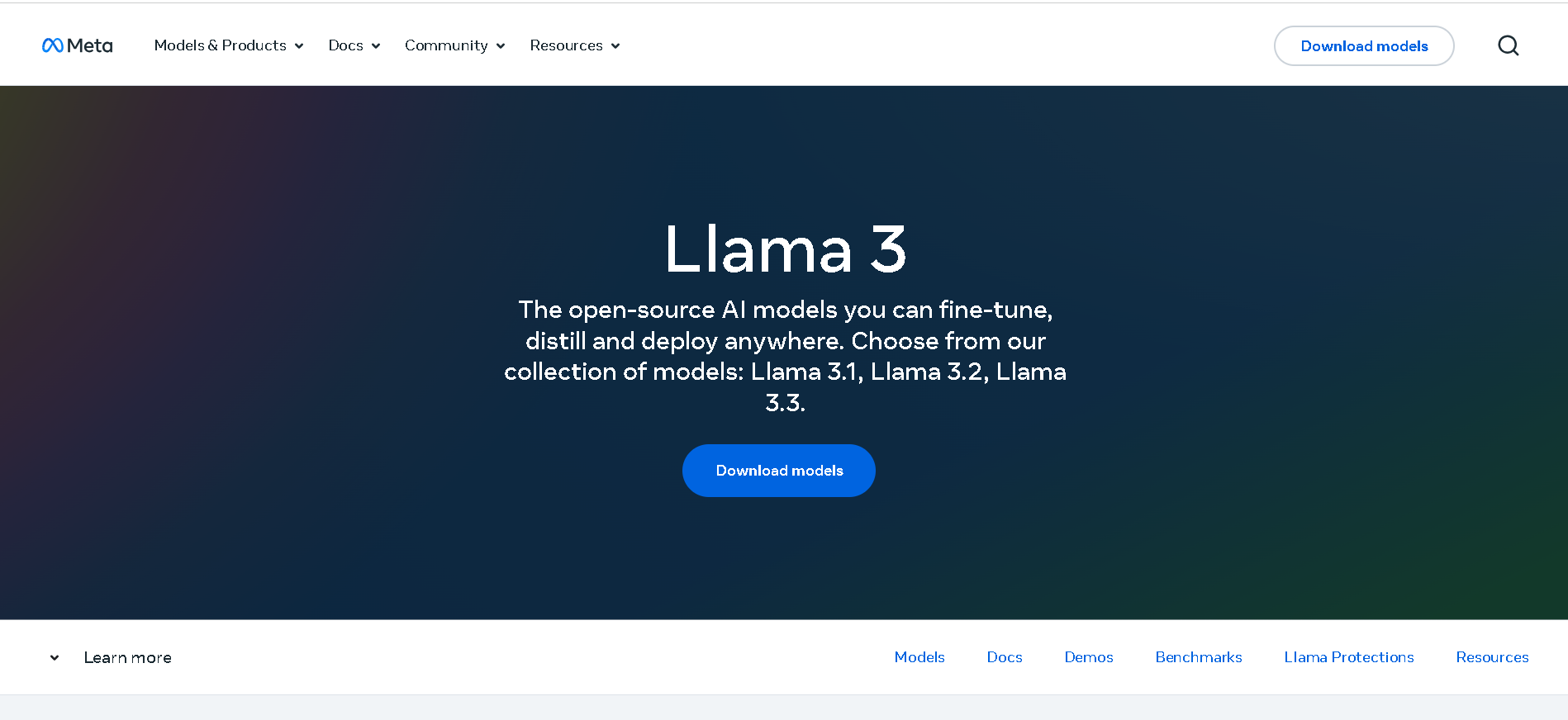
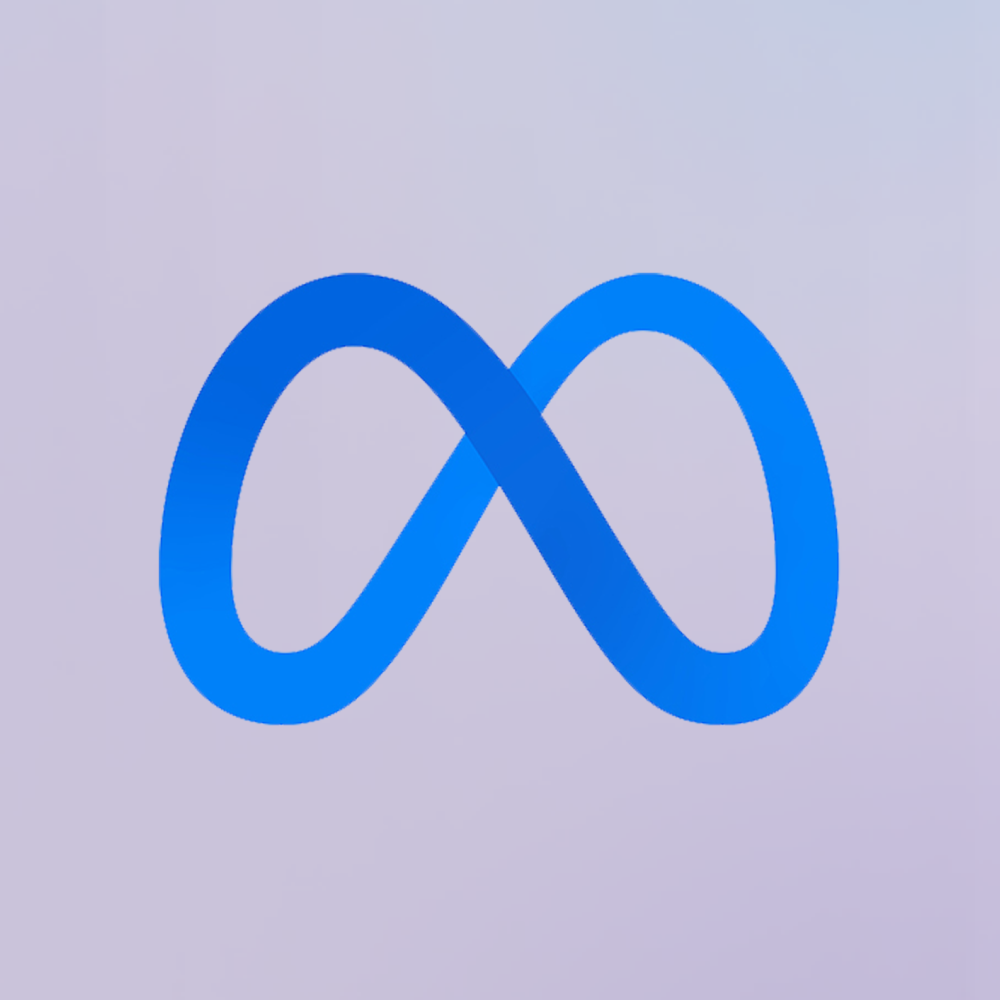
Meta Llama 3
Meta Llama 3 is Meta’s third-generation open-weight large language model family, released in April 2024 and enhanced in July 2024 with the 3.1 update. It spans three sizes—8B, 70B, and 405B parameters—each offering a 128K‑token context window. Llama 3 excels at reasoning, code generation, multilingual text, and instruction-following, and introduces multimodal vision (image understanding) capabilities in its 3.2 series. Robust safety mechanisms like Llama Guard 3, Code Shield, and CyberSec Eval 2 ensure responsible output.


Meta Llama 3
Meta Llama 3 is Meta’s third-generation open-weight large language model family, released in April 2024 and enhanced in July 2024 with the 3.1 update. It spans three sizes—8B, 70B, and 405B parameters—each offering a 128K‑token context window. Llama 3 excels at reasoning, code generation, multilingual text, and instruction-following, and introduces multimodal vision (image understanding) capabilities in its 3.2 series. Robust safety mechanisms like Llama Guard 3, Code Shield, and CyberSec Eval 2 ensure responsible output.


Meta Llama 3
Meta Llama 3 is Meta’s third-generation open-weight large language model family, released in April 2024 and enhanced in July 2024 with the 3.1 update. It spans three sizes—8B, 70B, and 405B parameters—each offering a 128K‑token context window. Llama 3 excels at reasoning, code generation, multilingual text, and instruction-following, and introduces multimodal vision (image understanding) capabilities in its 3.2 series. Robust safety mechanisms like Llama Guard 3, Code Shield, and CyberSec Eval 2 ensure responsible output.
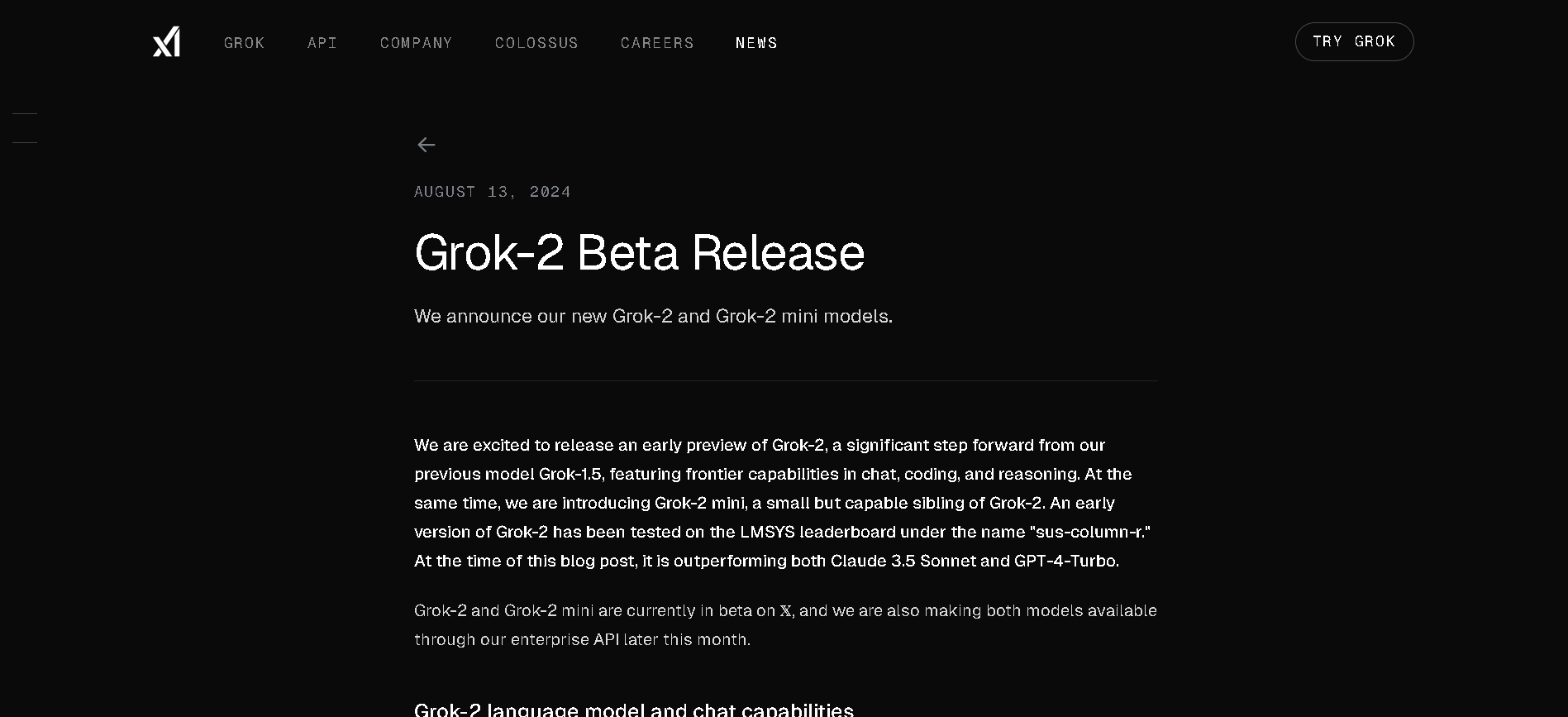
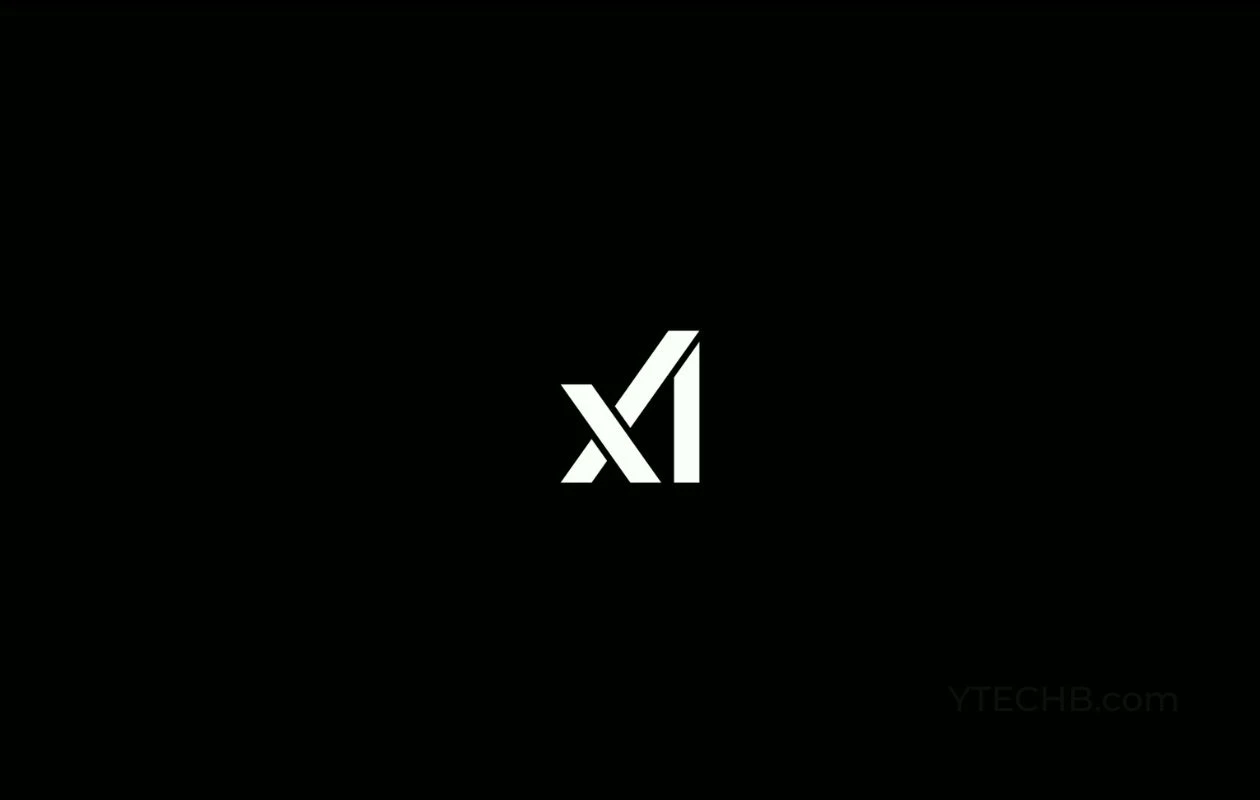
grok-2-latest
Grok 2 is xAI’s second-generation chatbot model, launched in August 2024 as a substantial upgrade over Grok 1.5. It delivers frontier-level performance in chat, coding, reasoning, vision tasks, and image generation via the FLUX.1 system. On leaderboards, it outscored Claude 3.5 Sonnet and GPT‑4 Turbo, with strong results in GPQA (56%), MMLU (87.5%), MATH (76.1%), HumanEval (88.4%), MathVista, and DocVQA benchmarks.


grok-2-latest
Grok 2 is xAI’s second-generation chatbot model, launched in August 2024 as a substantial upgrade over Grok 1.5. It delivers frontier-level performance in chat, coding, reasoning, vision tasks, and image generation via the FLUX.1 system. On leaderboards, it outscored Claude 3.5 Sonnet and GPT‑4 Turbo, with strong results in GPQA (56%), MMLU (87.5%), MATH (76.1%), HumanEval (88.4%), MathVista, and DocVQA benchmarks.


grok-2-latest
Grok 2 is xAI’s second-generation chatbot model, launched in August 2024 as a substantial upgrade over Grok 1.5. It delivers frontier-level performance in chat, coding, reasoning, vision tasks, and image generation via the FLUX.1 system. On leaderboards, it outscored Claude 3.5 Sonnet and GPT‑4 Turbo, with strong results in GPQA (56%), MMLU (87.5%), MATH (76.1%), HumanEval (88.4%), MathVista, and DocVQA benchmarks.
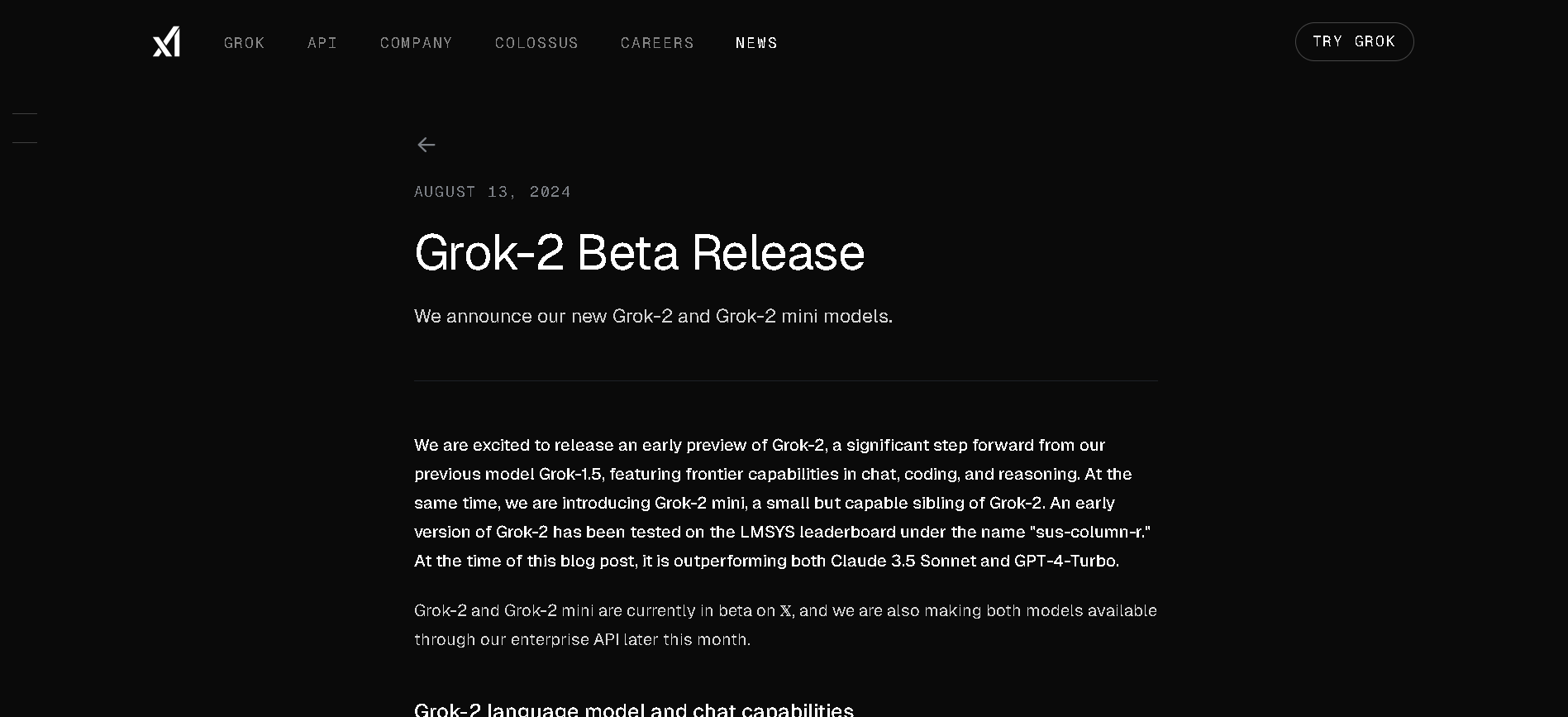
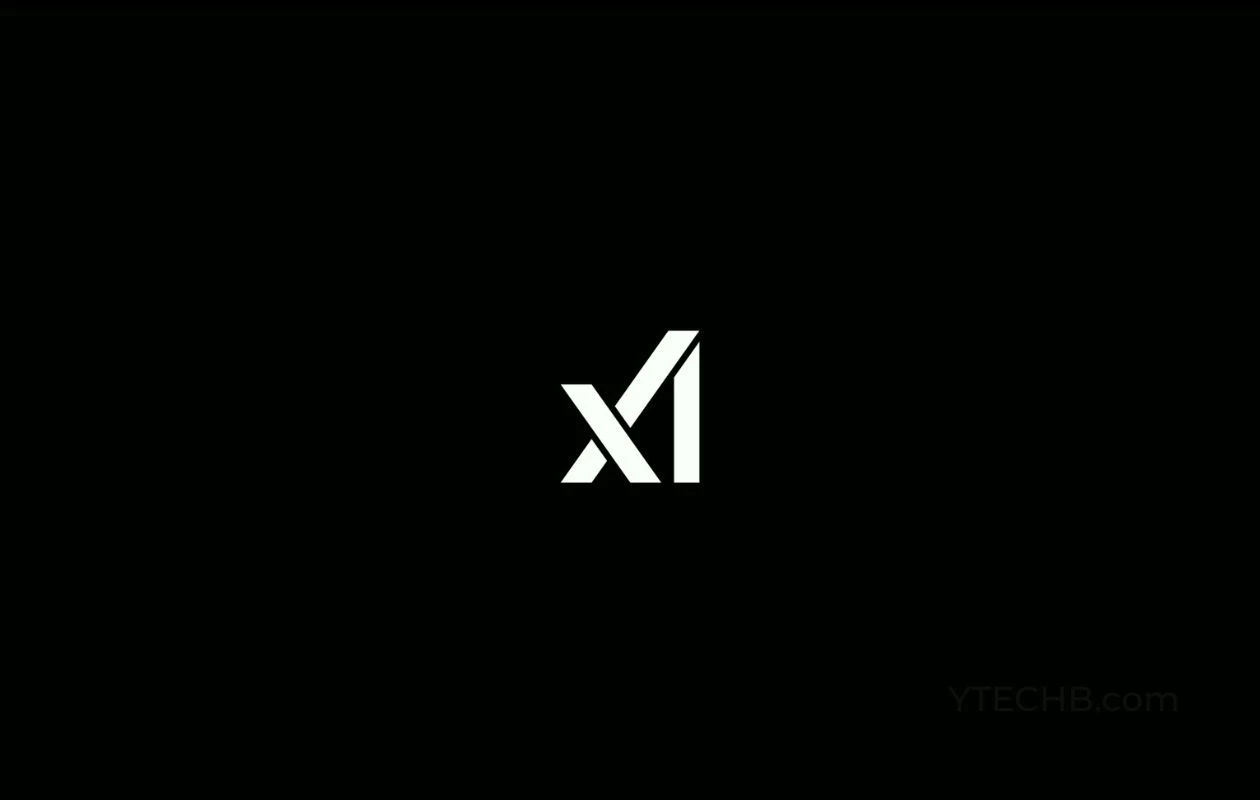
grok-2-1212
Grok 2 – 1212 is xAI’s enhanced version of Grok 2, released December 12, 2024. It’s designed to be faster—up to 3× speed boost—with sharper accuracy, improved instruction-following, and stronger multilingual support. It includes web search, citations, and the Aurora image-generation feature. Now available to all users on X, with Premium tiers getting higher usage limits.


grok-2-1212
Grok 2 – 1212 is xAI’s enhanced version of Grok 2, released December 12, 2024. It’s designed to be faster—up to 3× speed boost—with sharper accuracy, improved instruction-following, and stronger multilingual support. It includes web search, citations, and the Aurora image-generation feature. Now available to all users on X, with Premium tiers getting higher usage limits.


grok-2-1212
Grok 2 – 1212 is xAI’s enhanced version of Grok 2, released December 12, 2024. It’s designed to be faster—up to 3× speed boost—with sharper accuracy, improved instruction-following, and stronger multilingual support. It includes web search, citations, and the Aurora image-generation feature. Now available to all users on X, with Premium tiers getting higher usage limits.
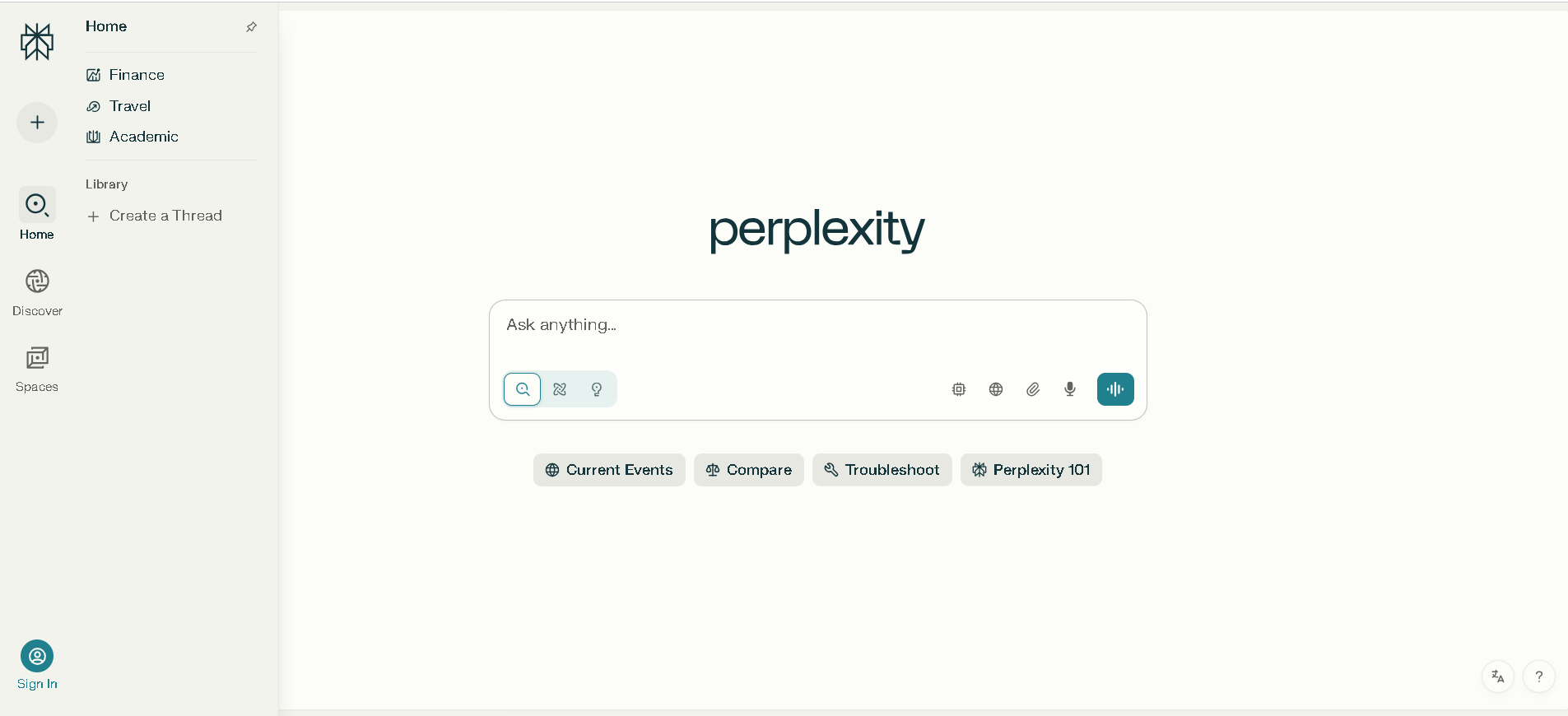

Perplexity AI
Perplexity AI is a powerful AI‑powered answer engine and search assistant launched in December 2022. It combines real‑time web search with large language models (like GPT‑4.1, Claude 4, Sonar), delivering direct answers with in‑text citations and multi‑turn conversational context.


Perplexity AI
Perplexity AI is a powerful AI‑powered answer engine and search assistant launched in December 2022. It combines real‑time web search with large language models (like GPT‑4.1, Claude 4, Sonar), delivering direct answers with in‑text citations and multi‑turn conversational context.


Perplexity AI
Perplexity AI is a powerful AI‑powered answer engine and search assistant launched in December 2022. It combines real‑time web search with large language models (like GPT‑4.1, Claude 4, Sonar), delivering direct answers with in‑text citations and multi‑turn conversational context.
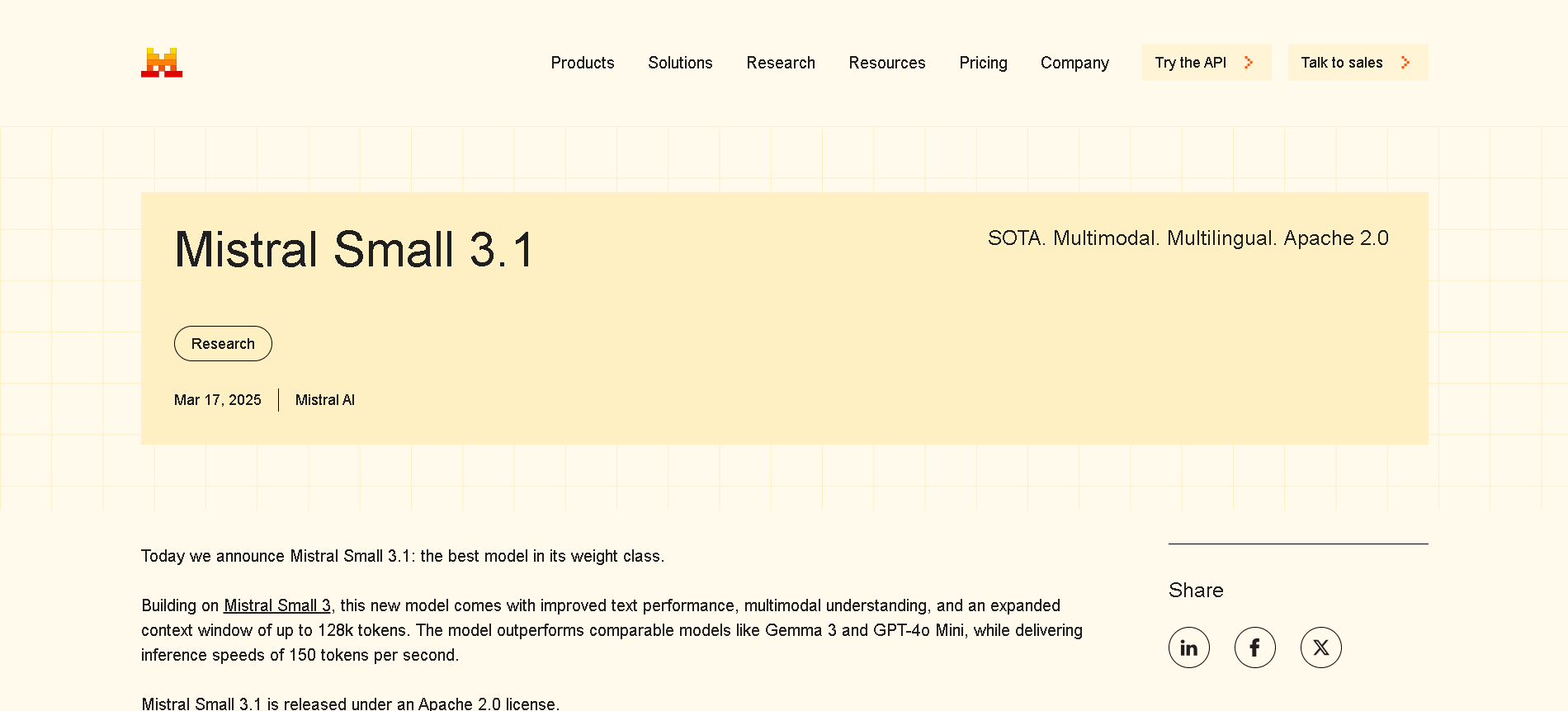
Mistral Small 3.1
Mistral Small 3.1 is the March 17, 2025 update to Mistral AI's open-source 24B-parameter small model. It offers instruction-following, multimodal vision understanding, and an expanded 128K-token context window, delivering performance on par with or better than GPT‑4o Mini, Gemma 3, and Claude 3.5 Haiku—all while maintaining fast inference speeds (~150 tokens/sec) and running on devices like an RTX 4090 or a 32 GB Mac.

Mistral Small 3.1
Mistral Small 3.1 is the March 17, 2025 update to Mistral AI's open-source 24B-parameter small model. It offers instruction-following, multimodal vision understanding, and an expanded 128K-token context window, delivering performance on par with or better than GPT‑4o Mini, Gemma 3, and Claude 3.5 Haiku—all while maintaining fast inference speeds (~150 tokens/sec) and running on devices like an RTX 4090 or a 32 GB Mac.

Mistral Small 3.1
Mistral Small 3.1 is the March 17, 2025 update to Mistral AI's open-source 24B-parameter small model. It offers instruction-following, multimodal vision understanding, and an expanded 128K-token context window, delivering performance on par with or better than GPT‑4o Mini, Gemma 3, and Claude 3.5 Haiku—all while maintaining fast inference speeds (~150 tokens/sec) and running on devices like an RTX 4090 or a 32 GB Mac.
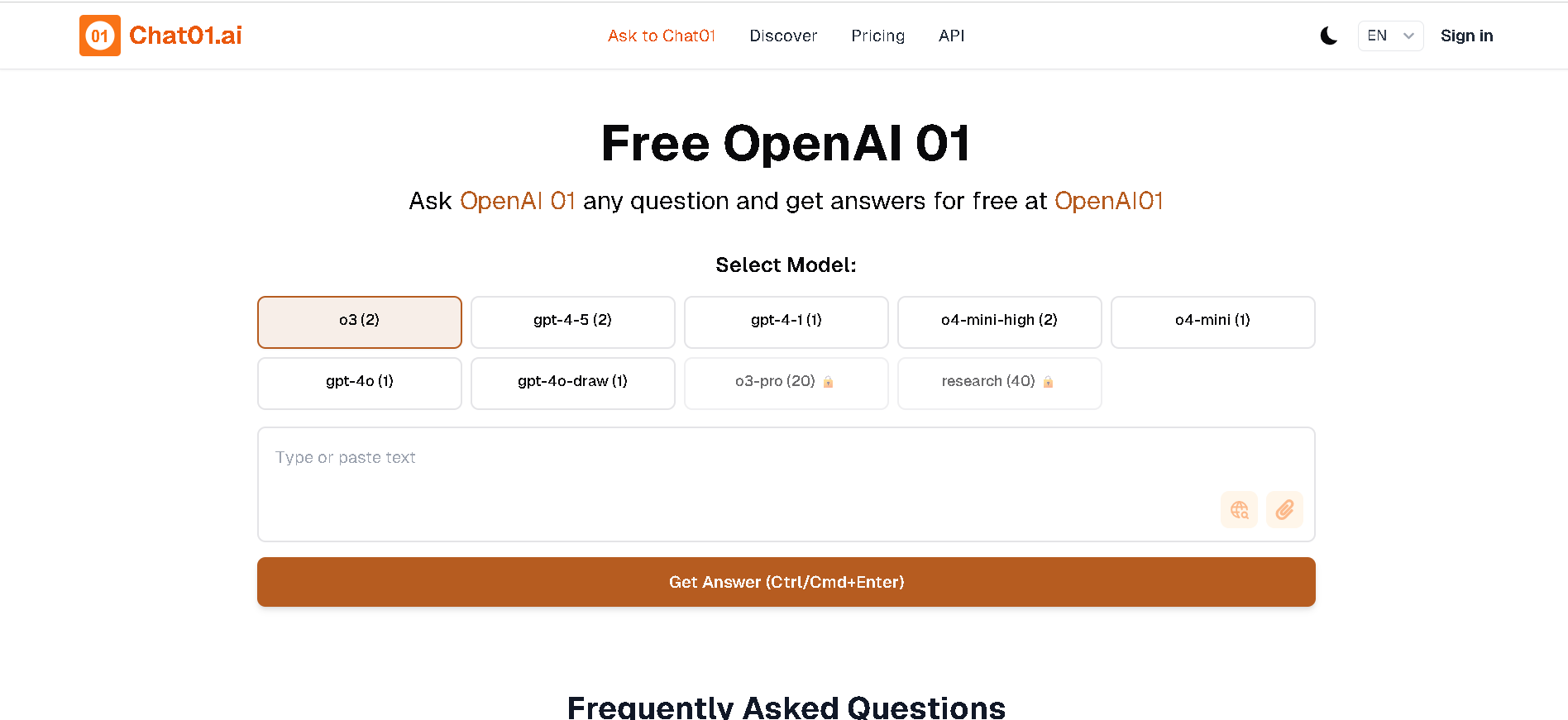
Chat 01 AI
Chat01.ai is a platform that offers free and unlimited chat with OpenAI 01, a new series of AI models. These models are specifically designed for complex reasoning and problem-solving in areas such as science, coding, and math, by employing a "think more before responding" approach, trying different strategies, and recognizing mistakes.

Chat 01 AI
Chat01.ai is a platform that offers free and unlimited chat with OpenAI 01, a new series of AI models. These models are specifically designed for complex reasoning and problem-solving in areas such as science, coding, and math, by employing a "think more before responding" approach, trying different strategies, and recognizing mistakes.

Chat 01 AI
Chat01.ai is a platform that offers free and unlimited chat with OpenAI 01, a new series of AI models. These models are specifically designed for complex reasoning and problem-solving in areas such as science, coding, and math, by employing a "think more before responding" approach, trying different strategies, and recognizing mistakes.
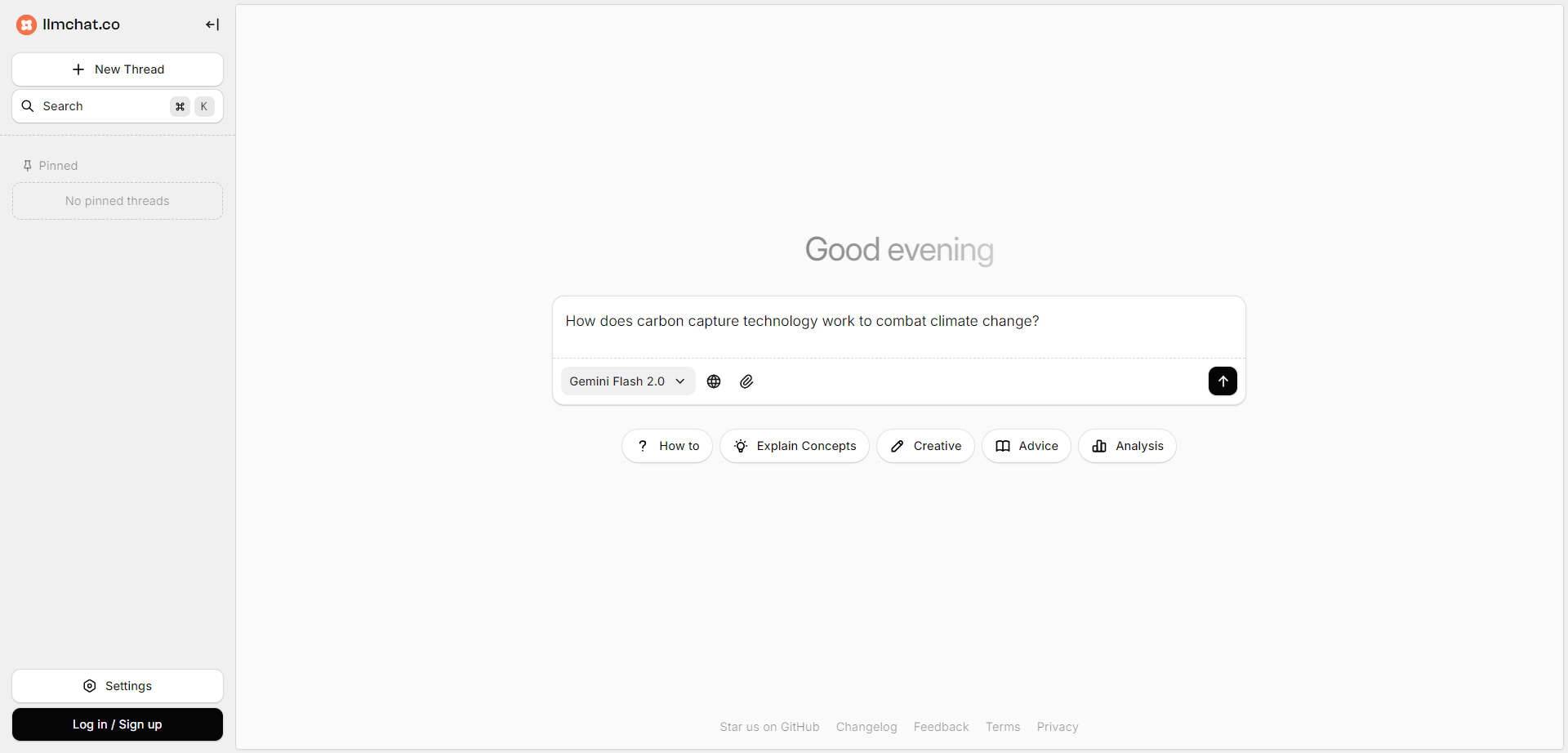
LLM Chat
LLMChat is a privacy-focused, open-source AI chatbot platform designed for advanced research, agentic workflows, and seamless interaction with multiple large language models (LLMs). It offers users a minimalistic and intuitive interface enabling deep exploration of complex topics with modes like Deep Research and Pro Search, which incorporates real-time web integration for current data. The platform emphasizes user privacy by storing all chat history locally in the browser, ensuring conversations never leave the device. LLMChat supports many popular LLM providers such as OpenAI, Anthropic, Google, and more, allowing users to customize AI assistants with personalized instructions and knowledge bases for a wide variety of applications ranging from research to content generation and coding assistance.

LLM Chat
LLMChat is a privacy-focused, open-source AI chatbot platform designed for advanced research, agentic workflows, and seamless interaction with multiple large language models (LLMs). It offers users a minimalistic and intuitive interface enabling deep exploration of complex topics with modes like Deep Research and Pro Search, which incorporates real-time web integration for current data. The platform emphasizes user privacy by storing all chat history locally in the browser, ensuring conversations never leave the device. LLMChat supports many popular LLM providers such as OpenAI, Anthropic, Google, and more, allowing users to customize AI assistants with personalized instructions and knowledge bases for a wide variety of applications ranging from research to content generation and coding assistance.

LLM Chat
LLMChat is a privacy-focused, open-source AI chatbot platform designed for advanced research, agentic workflows, and seamless interaction with multiple large language models (LLMs). It offers users a minimalistic and intuitive interface enabling deep exploration of complex topics with modes like Deep Research and Pro Search, which incorporates real-time web integration for current data. The platform emphasizes user privacy by storing all chat history locally in the browser, ensuring conversations never leave the device. LLMChat supports many popular LLM providers such as OpenAI, Anthropic, Google, and more, allowing users to customize AI assistants with personalized instructions and knowledge bases for a wide variety of applications ranging from research to content generation and coding assistance.
Editorial Note
This page was researched and written by the ATB Editorial Team. Our team researches each AI tool by reviewing its official website, testing features, exploring real use cases, and considering user feedback. Every page is fact-checked and regularly updated to ensure the information stays accurate, neutral, and useful for our readers.
If you have any suggestions or questions, email us at hello@aitoolbook.ai
